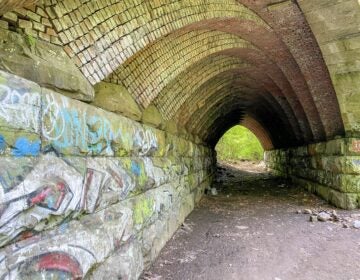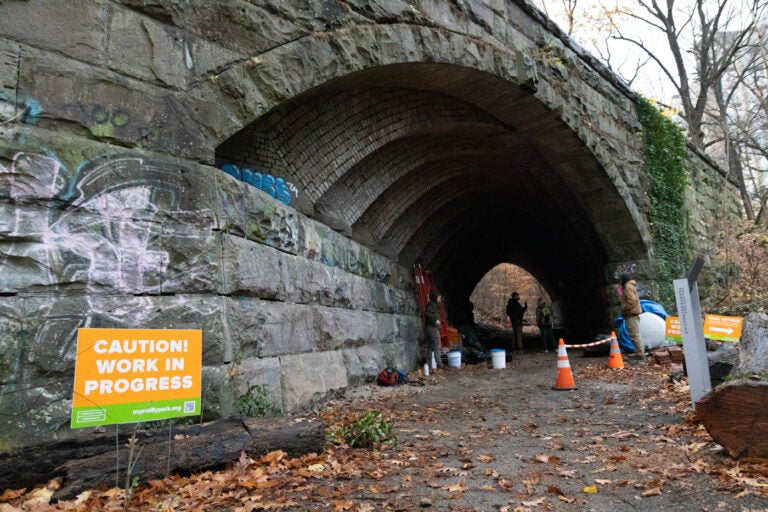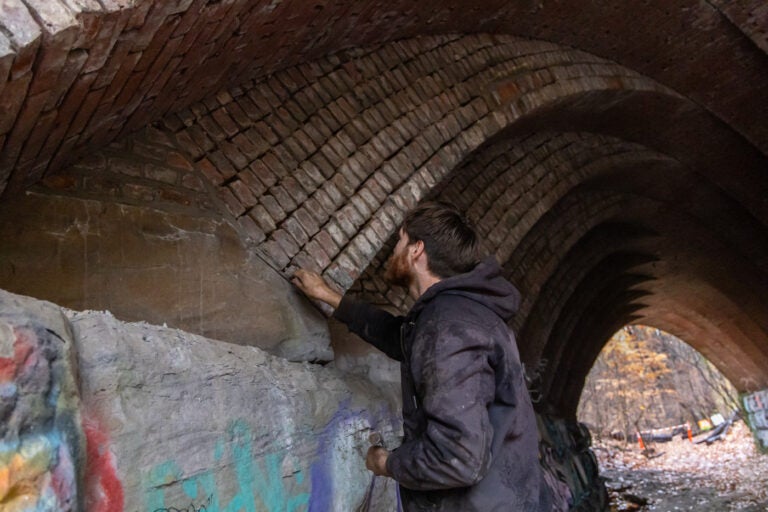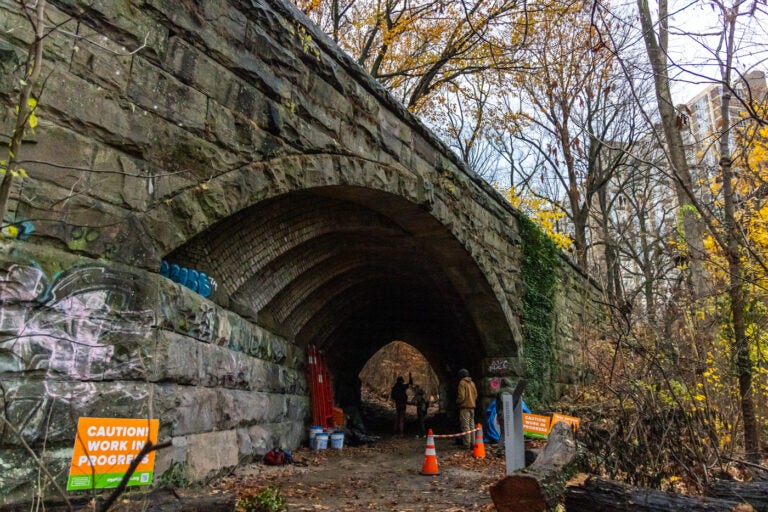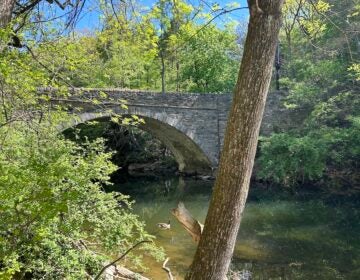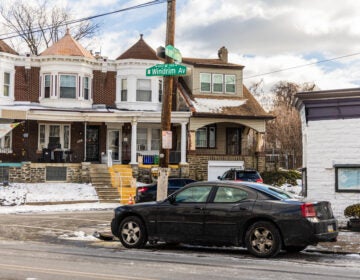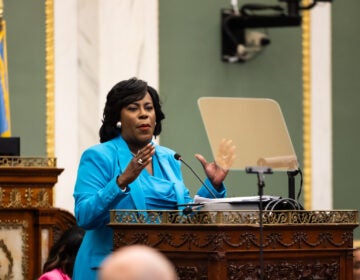This iconic trolley bridge in Fairmount Park is getting restored
Part of the Trolley Trail that opened last year, the century-old skew arch bridge is getting a facelift.
Have a question about Philly’s neighborhoods or the systems that shape them? PlanPhilly reporters want to hear from you! Ask us a question or send us a story idea you think we should cover.
The iconic skew arch bridge that crosses over the Trolley Trail in west Fairmount Park is getting some much-needed TLC.
Conservation specialists with the Fairmount Park Conservancy are restoring missing bricks that have fallen out of the more than century-old structure and cleaning off graffiti, and volunteers are removing invasive plants.
“[It’s] actually part of the special ephemera of Fairmount Park, that sometimes you’re walking through the park and you see these stone structures,” said Tara Rasheed, senior director of capital projects at the Fairmount Park Conservancy. “It hasn’t had the attention that it’s needed for more than 100 years.”
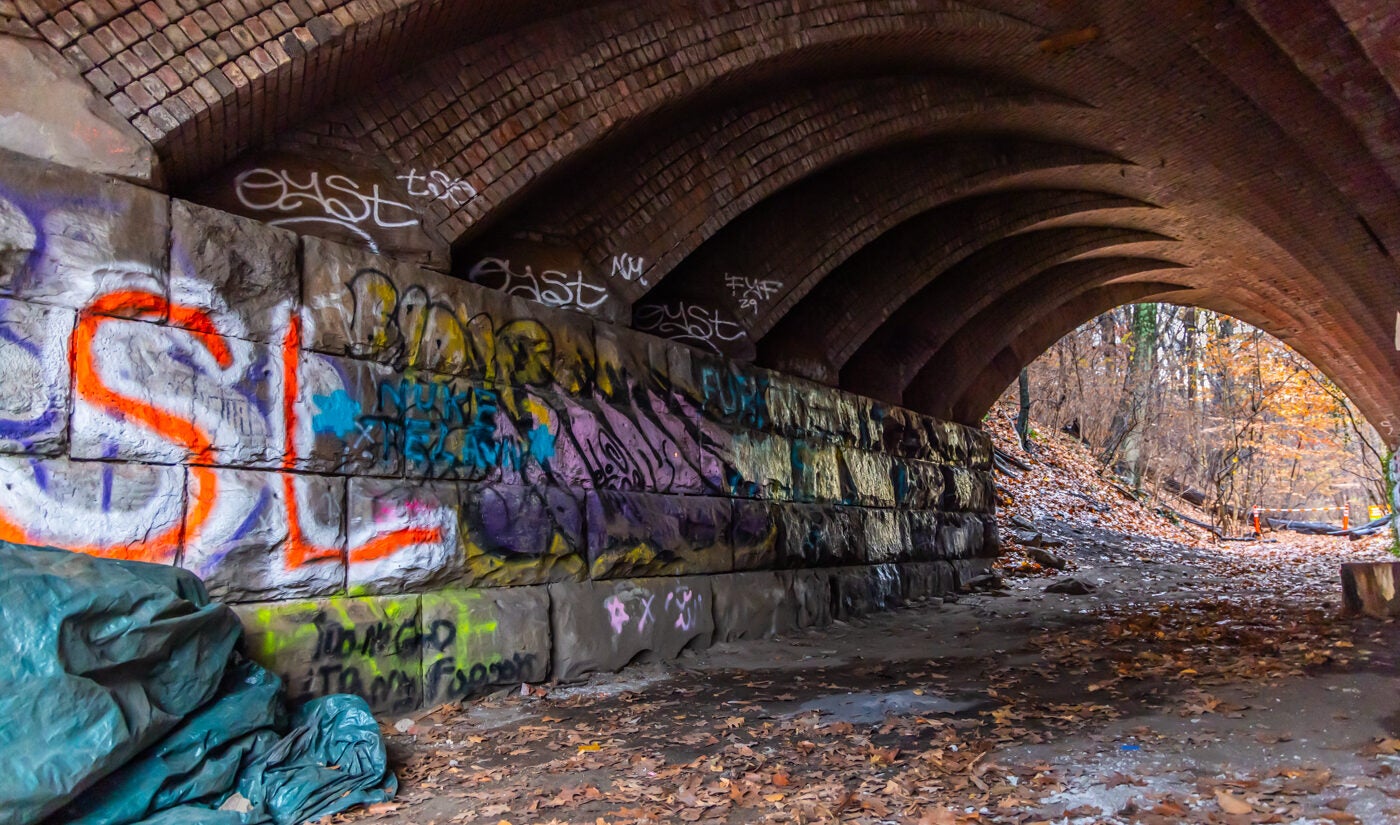
The conservation project aims to make the trail underneath safer for hikers and mountain bikers and allow the bridge to survive decades into the future. The Fairmount Park Conservancy plans to nominate the bridge for the National Register of Historic Places.
The bridge was built in the late 1800s as part of the Fairmount Park Transit Co. trolley line that ran through the park between 1896 to 1946, giving Philadelphians access to the park and the Woodside Park amusement park, and serving as a shortcut between North Philly and West Philly.
“Most trolley lines that were built in that period did not have elaborate bridges,” said Robert Thomas, an architect who sits on the city’s Historical Commission. “They were built cheaply to get them open and get passengers in.”
But the Fairmount Park Commission, which administered the city’s park system at the time, required the trolley company to build its bridges within the park to certain standards, which likely helped the skew arch bridge survive the decades, Thomas said.
“They demanded that all these stone bridges be of first-quality stone masonry,” Thomas said. “The bridge has received almost no maintenance … it’s still in reasonably good shape.”
The bridge’s striking design consists of 14 brick arches that form slanted ribs on the underside of the bridge. The skew arch was a common engineering solution for bridges that crossed an obstacle at a non-perpendicular angle, Thomas said. But not every skew arch bridge has this bridge’s distinct look.

“It carried Midvale Drive over the trolley bed diagonally,” he said. “The problem is, when you build an arch, if you make the arch diagonal, the ends of it will fall down … Like a slinky, they … built [14] arches that are next to each other but splayed one from the other. That’s so they work as a true arch.”
The Fairmount Park Conservancy has determined that the interior of the ribs are in good condition, Rasheed said. But natural aging of the mortar, along with trees and other plants growing on the bridge, have caused some wear and tear on the exterior.
A small conservation team has been replacing bricks that have fallen out of these slanted ribs with the original bricks or salvaged bricks of roughly the same age, securing them with a soft lime mortar that won’t damage the bricks, said Andrew Staples, conservation supervisor with the conservancy.
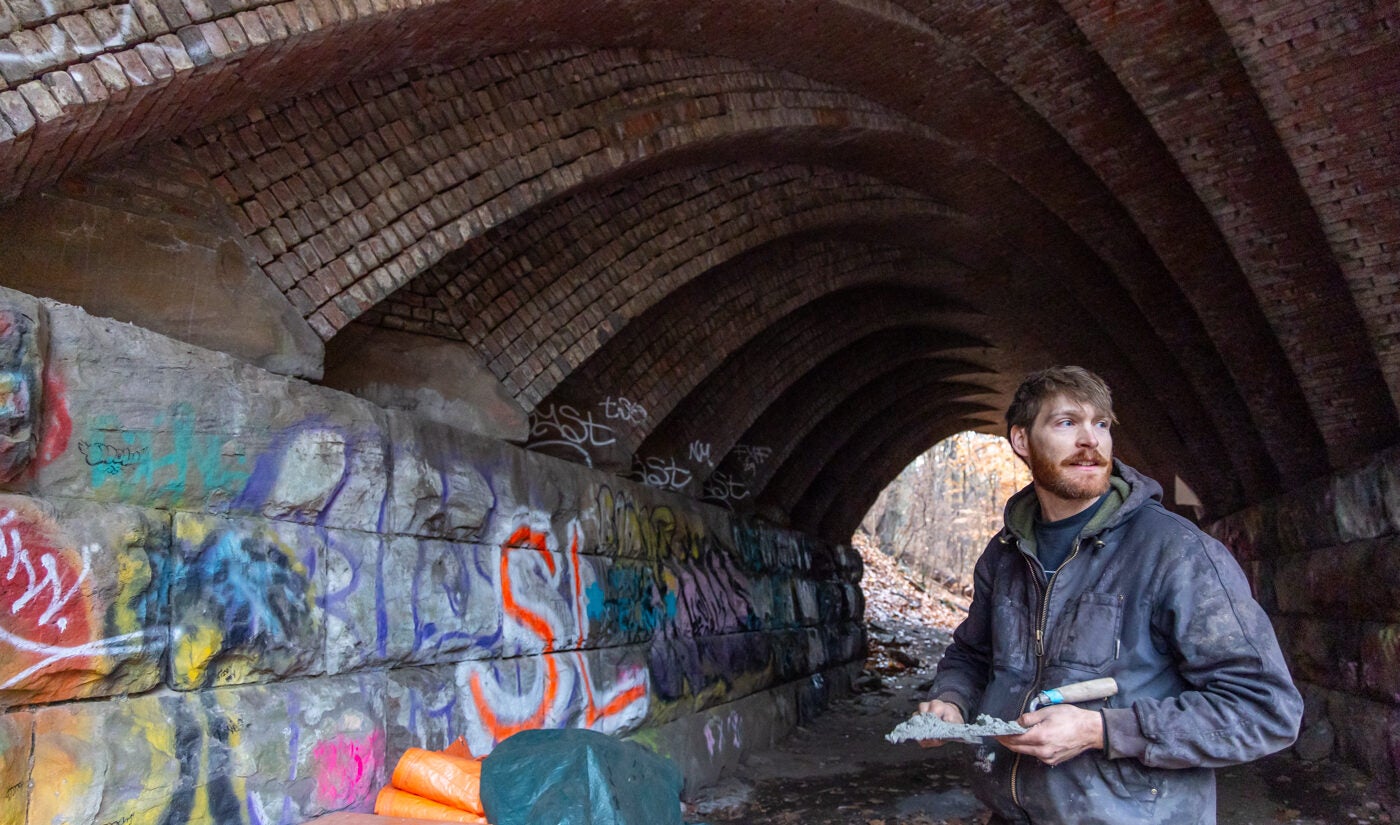
So far, the restoration project has cost under $100,000, Rasheed said. It’s funded by a state grant and a private donation.
Among the next steps in the bridge restoration will be repointing the entire bridge — or removing the old mortar from between the bricks and replacing it with new mortar.
During the work on the bridge, the Trolley Trail remains open, but hikers and bikers need to detour around the bridge. The segment of trail that runs through the bridge should reopen in early December, Rasheed said.

Get daily updates from WHYY News!
WHYY is your source for fact-based, in-depth journalism and information. As a nonprofit organization, we rely on financial support from readers like you. Please give today.




